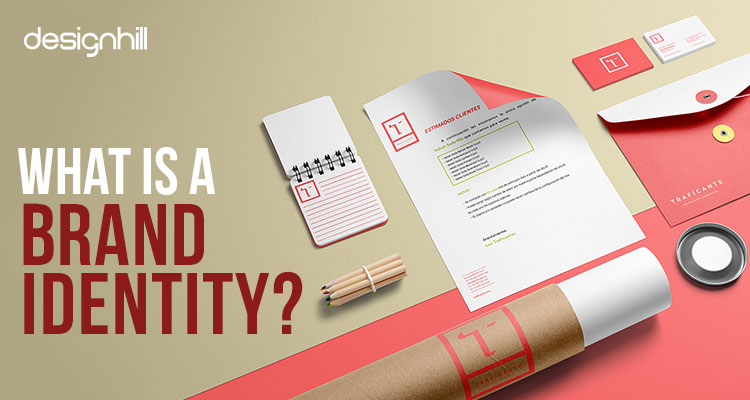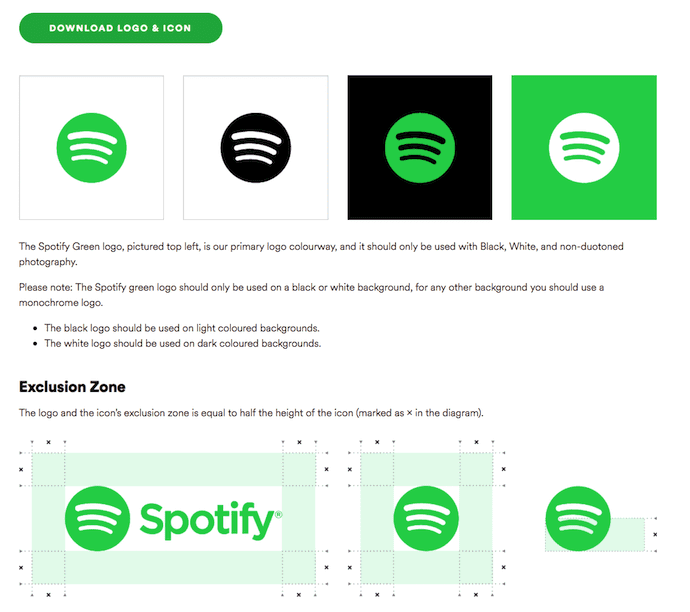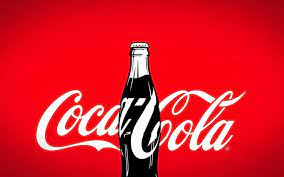Powerful Ways to Build an Unforgettable Brand Identity in 2022

Table of Contents
- The Elements and Use of Brand Identity
- The Importance of a strong brand Identity
- 8 Steps to Creating a Stunning Brand Identity
- What Is a Brand Identity Brief?
- Monitoring and refreshing Brand Identity
- 3 Examples of Distinctive Brand Identity
- Key Takeaways
- Conclusion
- FAQs
Brand identity is how consumers recognize a brand. In other words, it is the sum of all the visual and textual elements associated with the company or product. A good brand identity sets the company apart from its competition. It creates positive associations for consumers and stakeholders.

It’s important to know the difference between brand identity and brand image. While brand identity is the set of visual and visible elements, brand image relates to consumer perception. This means that a strong brand identity can also shape brand image.
It is vital for companies big and small to craft a unique and compelling brand identity. For consumers, it is a reassurance and a symbol of trust. Without it, a brand could be invisible and ignored.
The Elements and Use of Brand Identity
A brand identity comprises a logo, fonts, and colors at a basic level. These are linked to shapes and forms. Through a combination of these, a brand creates a distinctive look and appeal.
The brand logo, of course, should appear at every place that the brand is present. The colurs should be carefully chosen to portray the brand. Moreover, there should be consistency in the way the brand is represented.
There is virtually no consumer touchpoint where brand identity does not play a part. It can show up in all forms of advertisements and promotions. Be it online, outdoors, in print, or on TV. Brand identity is a critical component of shelf space and store communication for retail brands. Company interiors and stationery also reflect corporate brand identity.
With the rise of digital and audio communication, many brands incorporate online and sound elements into their identities. In an environment of multiple consumer channels, it can be helpful to think of brand identities as fixed at their core but dynamic in their applications.
The Importance of a Strong Brand Identity
Why should companies care about building and maintaining a strong brand identity? To begin with, a powerful brand identity leads to recognition and acceptance in the marketplace. It builds customer loyalty and trust.
At the next level, a well-designed brand identity reflects a company’s values. It establishes a personality that appeals to the target audience. When a brand identity is consistent across consumer touchpoints, it provides reassurance of quality. Consistency also leads to cohesive brand experiences across channels.
A brand identity used in this way creates greater awareness. An identity also differentiates the brand in the marketplace. It conveys that the brand is unique and cannot be replaced by the competition.
Over time, a robust brand identity leads to other benefits. With consumer loyalty, the brand can command a price premium. Moving away from the marketplace, a strong brand identity can be an advantage in recruiting desirable talent and reducing employee churn. In a nutshell, the main reasons to establish a unique brand identity are because:
- It reflects the company’s values and personality
- It creates awareness
- It establishes consistency
- It promotes loyalty
- It differentiates the brand from the competition
- It brings about unified brand experiences
8 Steps to Creating a Stunning Brand Identity
How do you build, establish, and maintain a valuable brand identity? Here are eight steps that shed light on this process. They’re a handy guide for those re-examining the current identity or creating a new one.
1. Values and personality
What does your business believe in? What are the values that make employees come to work every morning? Answering these questions is the first step in defining brand identity. This is even more important when it comes to new brands. It is essential to communicate what drives the enterprise and why it is worthy of attention.
If there is an existing mission statement, this can be a touchstone for your efforts. If you don’t have such a statement, put one down in consultation with key partners and stakeholders. A higher purpose provides a business with a strong personality. Connecting with this form of higher vision is an inspiration for both employees and consumers.
Your brand identity should clearly reflect this. The colors, the words, and the design come together to communicate the essence of your enterprise. In this way, the values of a business become the foundation of a rock-solid brand identity.
2. Audience

Defining your brand mission is an internal exercise. This should be matched with external research about your consumers. What is their frame of mind, and what do they look for from your brand and the competition? Where do they live, what language do they use, and their median age?
The more precise and focused you can be about these answers, the better. Sometimes, it helps to define an ideal target consumer. This could be a suburban housewife, a metropolitan executive, or a tier-2 family unit. The deeper you investigate, the more rewarding it will be. A starting point could be a day in the consumer’s life and how it intersects with your brand and the competition.
Find out as much as you can about consumer aspirations and pain points. This information is, of course, vital for marketing purposes. It also helps to create a brand identity that they will connect with.
3. Current and desired perceptions
Once you know what values you want to communicate and what the consumer is looking for, it’s time for the next step. You need to find out what the consumer currently thinks about your brand — and match this with what you want them to think. In other words, you should match current perceptions with desired ones.
Qualitative research backed by quantitative metrics is a good way to find out. For example, you may want your brand to be thought of as swift and responsive. However, research may show that the consumer feels that it is only average. This itself is a cue for your brand identity. An effective identity is not the only way to close the gap, but it is an important factor.
You can also check desired and current perceptions among employees and key stakeholders. Calibrating these perceptions is an effective approach to show you the direction to a precise and fine-tuned brand identity. This will go a long way in promoting retention and loyalty.
4. Competition
Assessing the state of your competition is the third preparatory step. As far as possible, you should use the same parameters you have applied to your brand: values, personality, perception, and target audience.
This exercise will help you discover if consumers have a unique view of your brand. What are the ways in which they find you better versus the competition? What are the factors that drive loyalty? Does the competition have an advantage? If so, what can you do about it?
The competition’s brand identity will offer clues about what you should and should not be doing. For example, you should avoid using the color and font used by the others. This will create a greater differentiation in the consumer’s mind. Often, consumers cannot distinguish one brand from another. Creating a unique look for your brand will give you the edge.
5. Visual cues
Now, it’s time to consider the actual nuts and bolts of brand identity creation. To begin with, there are visual cues. These are the logo and associated design elements.
The logo is of prime importance. Many brands and companies will already have a pre-existing logo. This needs to be assessed for its strengths. If need be, it can be redesigned to reflect the necessary values.
However, this exercise should be done with care. Consumers recognize brands by their logos. That is why there should not be any risk of misperception. The brand identity can be designed around the logo as it currently exists.
Then, other visuals can add value. Think of the Nike swoosh, for example. This is the most recognized part of the company’s brand identity. Not every brand identity design requires a separate visual element. However, a strong icon can boost recognition.
For instance, a flying bird, an open door, or a key can emphasize desirable brand attributes. At all times, such icons should be kept simple. It is hard to reproduce complex designs and shapes across different sizes and mediums.
6. Colors and typography
Colors are an essential part of brand identity design. Psychologists have pointed out that colors are strongly associated with emotions. For instance, red denotes passion and energy, blue is confident, and brown represents stability. You need to choose colors that suitably capture the mood of your brand.
There should not be too many colors in brand identity to prevent confusion. Ideally, there can be one primary color, and two or three secondary colors. Colors also help to differentiate a brand from the rest. Pick those that are distinctive.
The same applies to typography. There are plenty of fonts: classic, modern, new-age, friendly, formal, and more. You should select them based on what your brand represents and what the typeface conveys.
There should be a primary font and at most one or two secondary fonts as with colors. A distinctive and readable font is often the best choice. Flashy fonts can convey an image that is loud and prominent.
7. Templates and consistency
Once the brand identity has taken shape, it is important to create a template. This is a blueprint used to apply the brand identity design across various channels. It is also referred to as a brand identity kit or manual. It can take the form of a printed folder or a digital resource.
A template ensures the consistency of your brand identity. Whether it is a promotional offer, a greeting card, a TV commercial, or anything else, the right use of the template means that elements of the brand identity will be properly used. After all, the main point of identity is to convey the same style across mediums.
The template should include all the colors, fonts, and designs selected. It should contain different forms of ad copy and communication formats. It should also display how the identity can be used at various points.

8. Guidelines and usage

The elements of the brand identity must be used across channels according to pre-approved formats. The template shows how this is to be done. All the work and thought that has gone into creating a unified identity will be wasted if it is not used correctly.
The guidelines should also remind the vision, mission, and values that the identity is based on. Everything else flows from this. Dealers, employees, and agency personnel responsible for internal and external communication should be trained in the usage of the brand identity. They should know the right way to use the logo, the colors, and the other design elements.
The importance of using the guidelines properly should be understood across the board. Then, consumers and stakeholders will experience a single-minded and appealing look that will elevate the brand.
What is a Brand Identity Brief?
Of the eight steps outlined above, the last four are typically handled by a design studio or agency with experience in brand identity creation. They create the brand identity logo and other visual cues such as color and typography. Finally, there are templates and guidelines.
For the agency to develop an effective brand identity, they need to be given a precise brand identity brief. This is formalized and written down after discussions with all stakeholders.
The brand identity brief should contain the first four steps in identity creation. It should mention the company’s values, the target audience, what sets it apart from the competition, and the current and desired perceptions of the brand.
If a change in existing brand identity is needed, the brief should explain the reason. For example, is there a different set of consumers, or is the brand repositioning itself? Is there a new product line?
The brief should also mention any further requirements. This depends on the marketing strategy. For example, the company could be planning to foray into e-commerce or make a splash on social media.
The brand identity brief is an important document. The voices of all parties concerned should be represented. Once the brand identity designs are presented, they should first be checked against the brief.
Monitoring and Refreshing Brand Identity
Brand identity is not static. It comes to life when it is used across channels. Consumer reactions and feedback are critical aspects. It is a good idea to regularly monitor brand identity for these reasons.
This activity is often a part of an overall brand monitoring exercise. It involves tracking various consumer channels to spot where the brand is mentioned. It also means checking where and how consumers have conversations about the brand.
This feedback provides insights into consumer perceptions and attitudes. It lets you know how the brand identity is being received and whether you need to take steps to tweak it.
If the feedback is not desirable, or if any other conditions change, many brands go in for a refresh in identity. Typically, a complete overhaul is not the answer. This could confuse consumers about the nature of the brand. The trick is to retain the core while giving it a new look.
Brand identities are often refreshed by clarifying and refocusing on certain elements. Not all of them need to be changed. The visuals and typeface could need modernizing, or there could be a directional shift in the company’s vision.
In this way, a brand identity refresh can keep the company abreast of shifting conditions. It lets you connect more efficiently with your consumers. It shows how the brand has evolved and improved over time.
3 Examples of Distinctive Brand Identity
Here are three popular examples of distinctive brand identity.
1. Coca-Cola

The Coca-Cola brand is mentioned in almost all effective brand identity design discussions. To begin with, it has a distinctive and easily-spotted logo and ribbon imagery. The color red is also strongly identified with the brand.
Another element of Coca-Cola’s identity is the visual depiction of the bottle. This has a unique shape. It lets consumers know that they are getting the real thing.
2. Mastercard
The two intersecting circles in Mastercard’s brand identity are also well-known. They appear in distinctive red, yellow, and orange colors. Over the years, the identity has been refreshed.

The new identity aims at focusing on and unifying the brand. It makes the visual voice clear and direct. The logo has been simplified to give less attention to the “card.” This is because there are many more digital means of payment and not just a physical card.
3. Netflix
Netflix is instantly recognized by its universal ‘N’ symbol. It appears distinctively. The brand name is spelled out in a cinemascope style at other times. Here, the color red brings out excitement and anticipation. There is also a clear spacing between each letter to make them stand out. The black background adds drama.

Key Takeaways
- Good brand identity makes the brand familiar to consumers. It is the total of all the visual and textual elements associated with the company or product.
- A distinctive brand identity differentiates the company from the competition. It conveys a unique personality.
- The internal process of building a brand identity starts with identifying the brand’s values and mission statement. Then, knowledge must be gathered about the target audience as well as the competition. Desired perceptions must be mapped against current perceptions.
- A design agency or studio then takes over to create visual cues that include colors and typography that correspond to the design brief.
- A brand manual is an important document to ensure consistency in usage. The look and feel of the brand should stay the same across channels and sizes.
Conclusion
Think of brand identity as a consumer’s introduction to the brand and a way of recognizing it in a crowd. You want to share the brand’s face with everyone else.
Building a brand identity that has a distinctive personality takes time and effort. In a competitive environment, the results are more than worth it. After all, a strong brand identity makes the brand much more than just a product or service.
The brand identity journey starts with a brand vision and then proceeds to find out how those principles are best portrayed across mediums. This makes the brand identity become everyday and anticipated presence for consumers. Not simply a logo and a symbol.
FAQs
Brand identity is an effective combination of all the brand’s visible elements. These can include colors, logo, name, and tagline.
A brand is a result of how consumers perceive your product or service. Branding is how marketing and advertising try to create a desired perception of the brand. Brand identity is the collection of visible elements associated with the brand across consumer channels.
The brand identity elements should be instantly recognizable in shape, form, and colors. The logo should be simple and unique. Taken together, the elements should be distinctive and convey the company’s personality. The brand identity should create the same effect across mediums, from a full-page ad to a mobile phone screen.
In general, marketers agree that the three common types are a product or service brand, a corporate brand, and a personal brand.
Many visual elements can go into creating a brand identity. Overall, brand identity should take into account:
– Voice
– Identity
– Promise
– Values
– Target audience
– Positioning
You should start with the core values and principles of the brand. This is what you should communicate to the consumer. A good brand identity effectively brings out the brand’s unique personality and promise.
Latest Blogs
Learn how to rank on AI search engines like ChatGPT, Perplexity, and Gemini by optimizing your content for authority, structure, and relevance. Stay ahead in AI-driven search with this strategic guide.
Explore the best healthcare SEO services for your medical practice. Improve online visibility and effectively reach more patients in need of your services.
Discover top social media agencies specializing in banking solutions, enhancing financial services and driving engagement.
Get your hands on the latest news!
Similar Posts

Branding
10 mins read
What Are Brand Guidelines, and How Do They Work?

Branding
8 mins read
Decoding the Branding Strategy of Patanjali

Branding
7 mins read